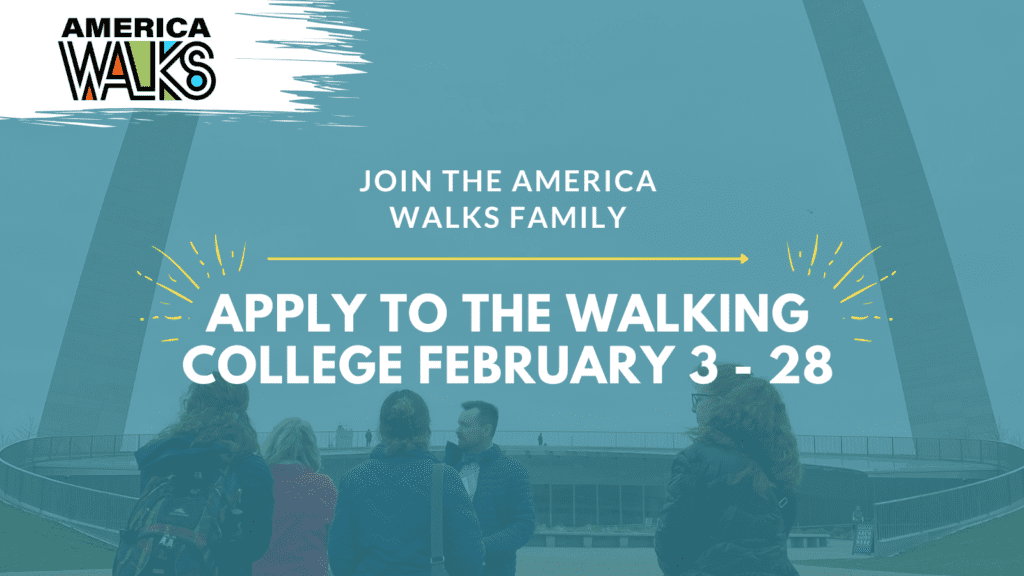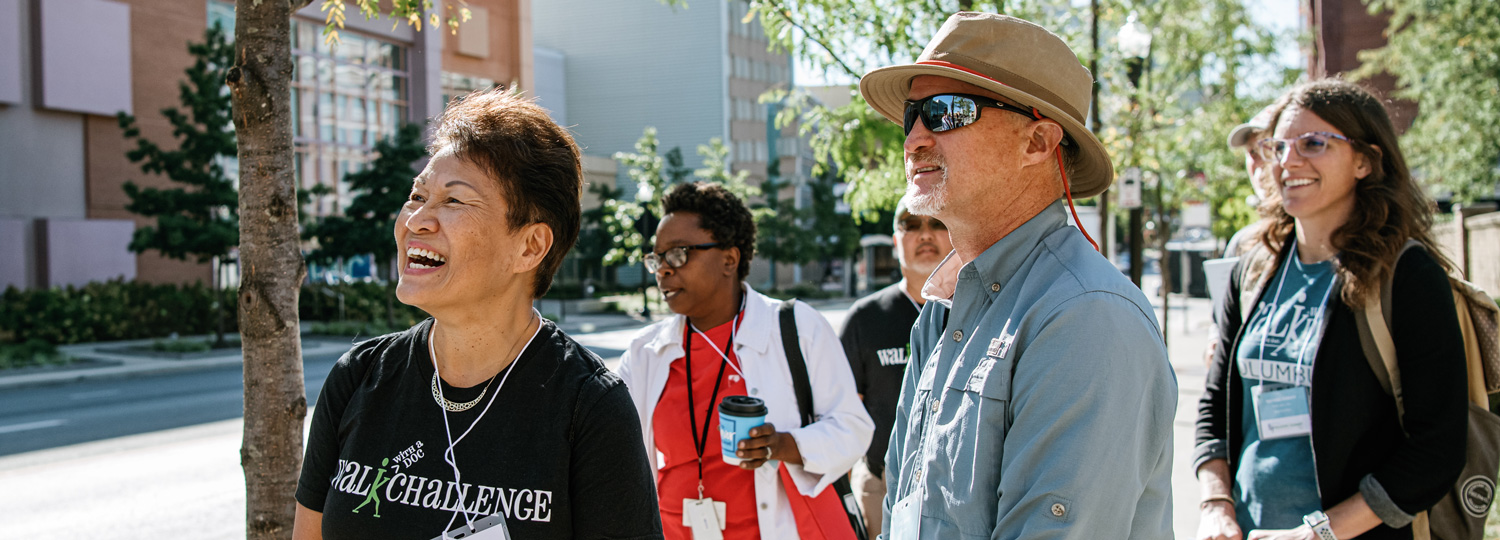
Building Local Capacity within the National Walking Movement
The Walking College is an online educational program geared toward early-to-middle-stage community champions eager to work toward expanding access to walkable, vibrant, safe, and accessible places. Fellows hone in on a problem in their community they wish to address, develop the knowledge and skills they need to help bring about positive change, with feedback from mentors and peers create a plan for getting the work done, and in the process become some of America Walks’ most valuable grassroots partners.
Participants are asked to commit to 5 to 10 hours a week to complete six online learning modules consisting of readings, videos, written assignments, discussion groups, one-on-one coaching sessions, and workshops. By the end of the program, they submit an action plan outlining goals and strategies and a timeline for taking meaningful action toward a problem of their choosing.
Stories from the Walking College
Applications for National Walking College are open February 3-28
Walking College alumni are making positive change in 46 states and the District of Columbia.
Annual Timeline:
- Applications are open February 3-28
- Fellowships are awarded in late March
- Part I (Introduction to Walkability) will run from May through July.
- Part II (How to Make the Change We Seek) will run from July through September
Over the past eight years, over 200 Walking College Fellows have completed the program and gone on to help spur important change in their communities.
Our Alumni Have:
- Successfully lobbied for the installation of sidewalks, crosswalks, and related infrastructure to make walking safer and more accessible
- Convinced lawmakers to adopt complete streets policies
- Established walking school bus programs and other events designed to promote active transportation
- Conducted walk audits to explore challenges and opportunities related to moving around communities and taught others the power of this tool
- Used the arts to make communities more appealing to walk in
- Become leaders in active transportation jobs and volunteer efforts around the country
How to Apply
We welcome all candidates that demonstrate a basic understanding of the importance of walkability and a desire to become more effective in advocating for positive change. There are no restrictions on age or professional background and we actively seek out candidates with a diversity of life experiences.
Requirements:
- Commitment of 5-10 hours per week
- Attendance at all group and mentoring sessions
- Completion of a road reimagining proposal (for participants in Part I) or a Walking Action Plan (for participants in Part II) by program closing
For more information about the program application or other questions about the program, contact Walking College Program Manager Emilie Bahr. Email Emilie.
“When I joined the Walking College in 2016, I expected it to help with my network, but I did not expect the relationships to necessarily be as long-lasting and as critical to my work as I now realize they are.”
Heyden Black Walker, Austin, Texas
“The Walking College experience was a game changer for me personally. It gave me the tools, including real-world examples, of how to influence change in our community. We have demonstrated that walking in this town is easy, safe, inexpensive… and highly encouraged.”
Mayor Gordon Petrie, Emmett, Idaho
“The Walking College increased my self-confidence in my ability to make change. I feel I have a framework and knowledge that many planners and public works departments lack, and I have a new vocabulary to accompany them. I feel the Walking College has enhanced my credibility.”
Steve Garon, Staunton, VA
“This experience has given me more confidence to pursue more opportunities to make changes in my community.”
Rita Freeney, Oklahoma City, OK
